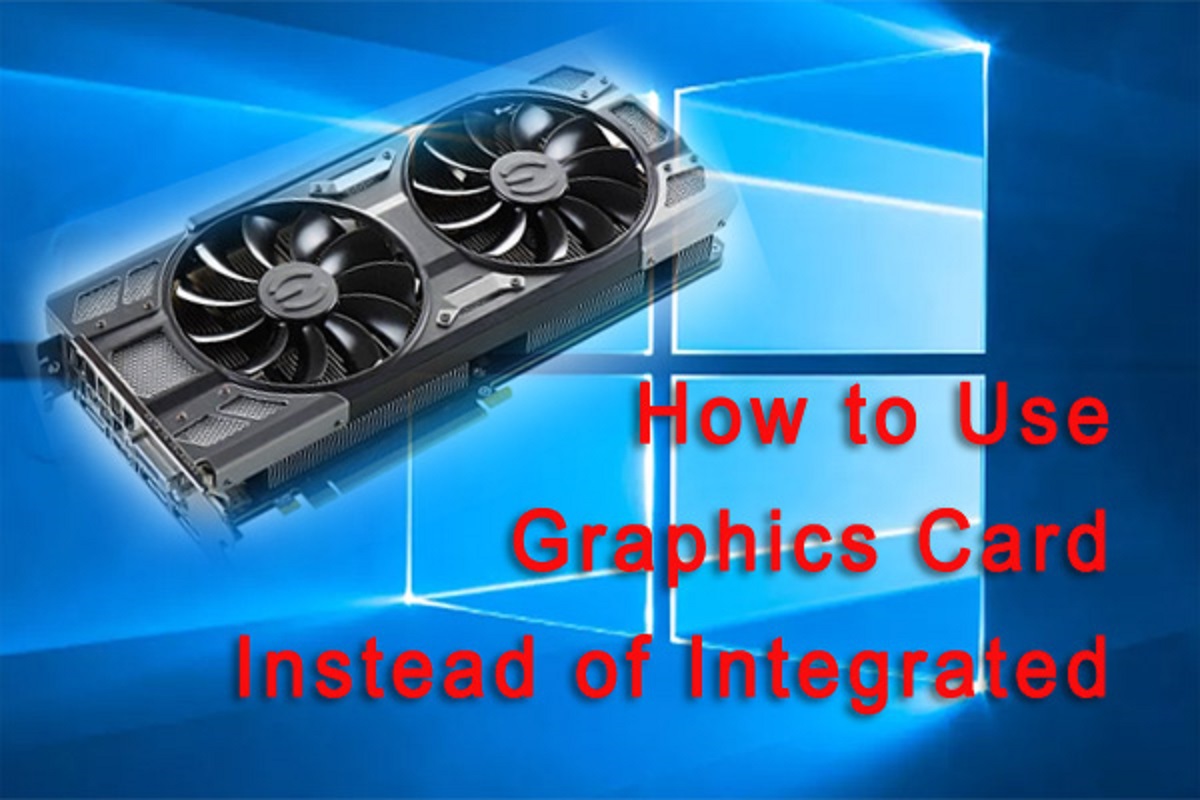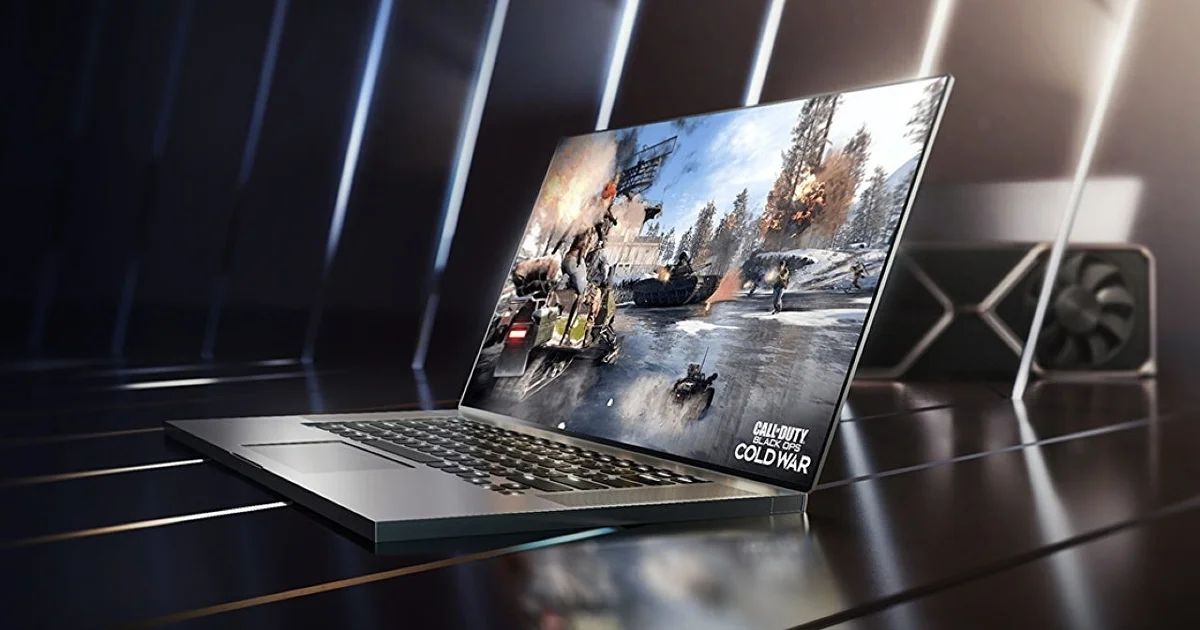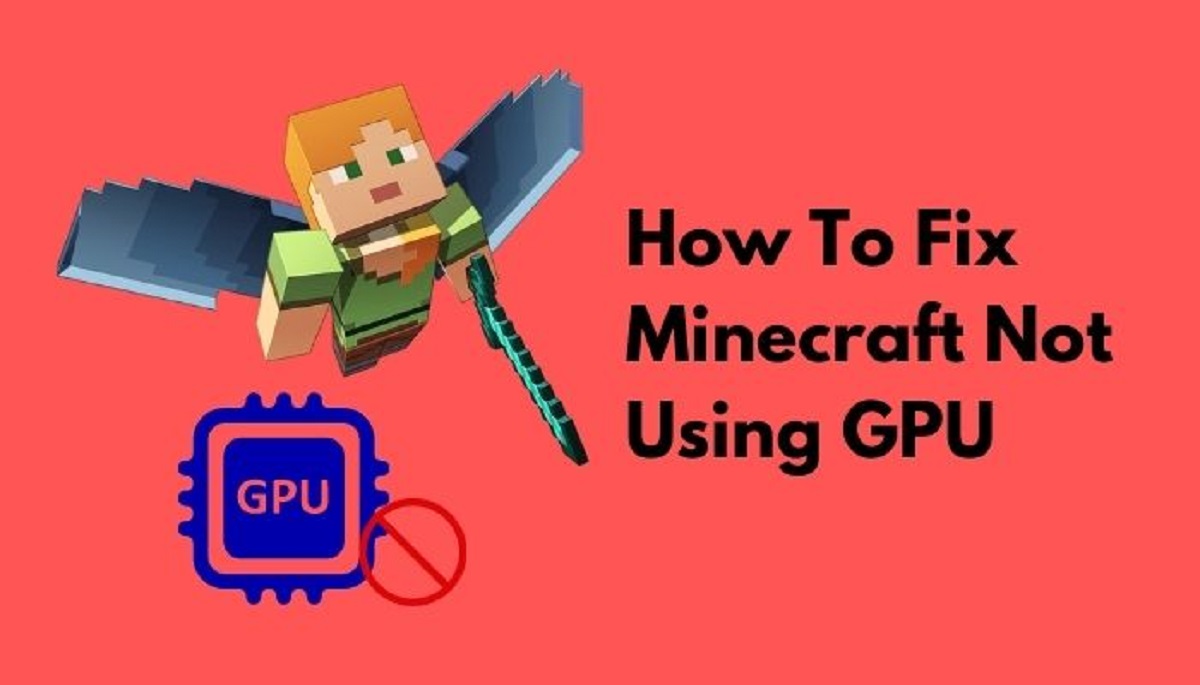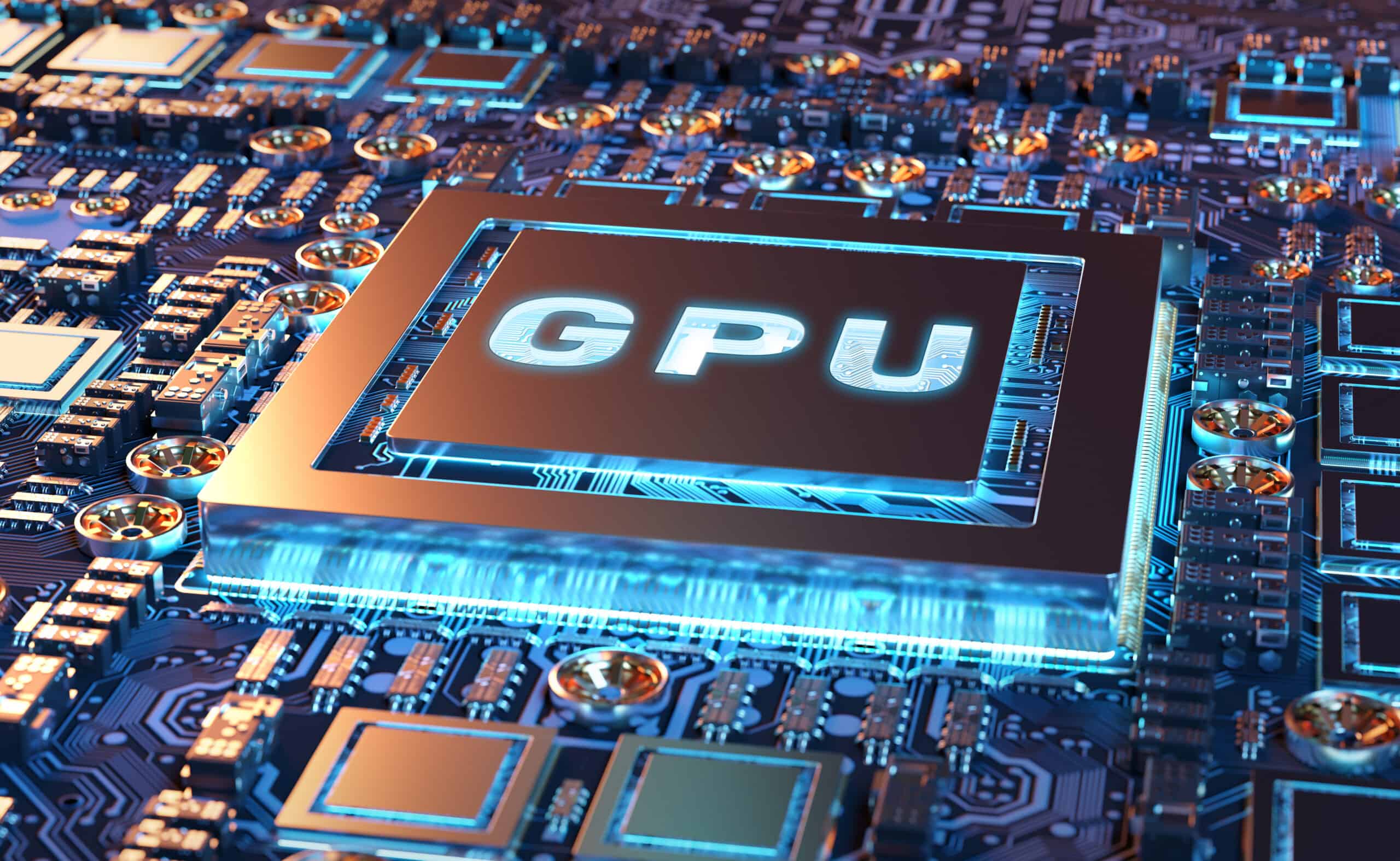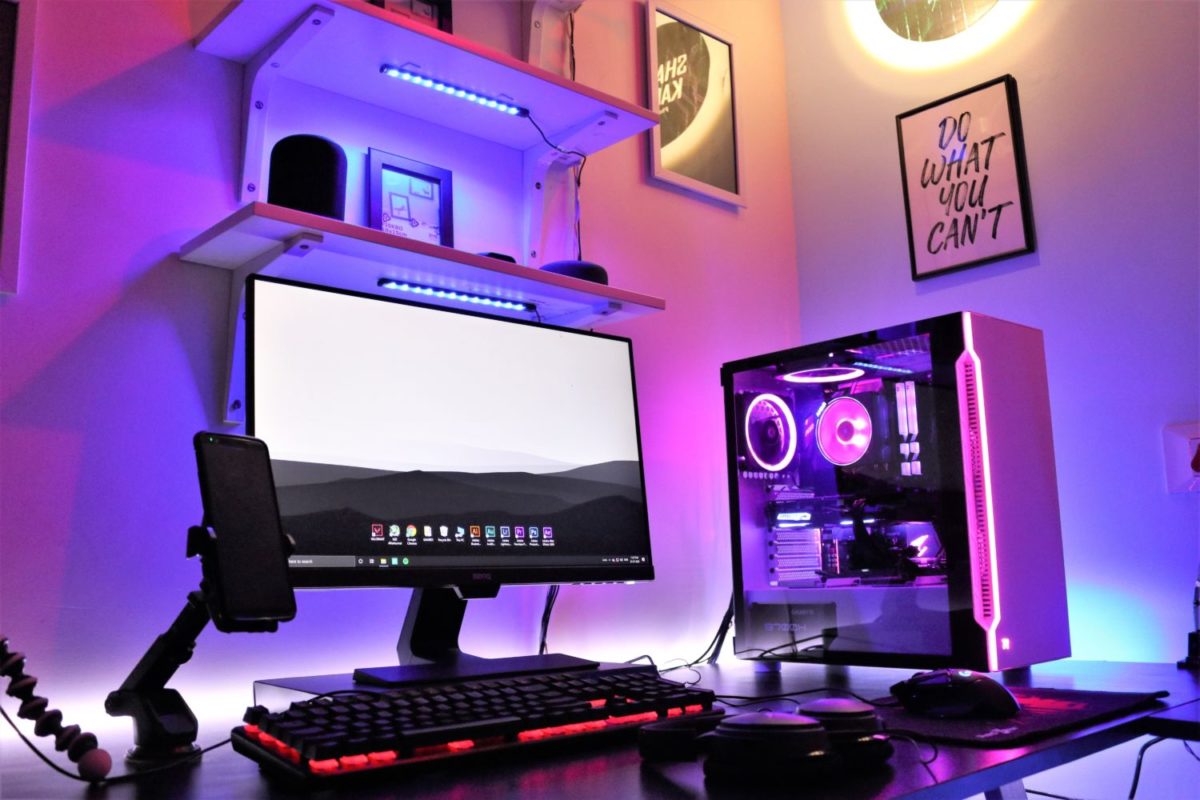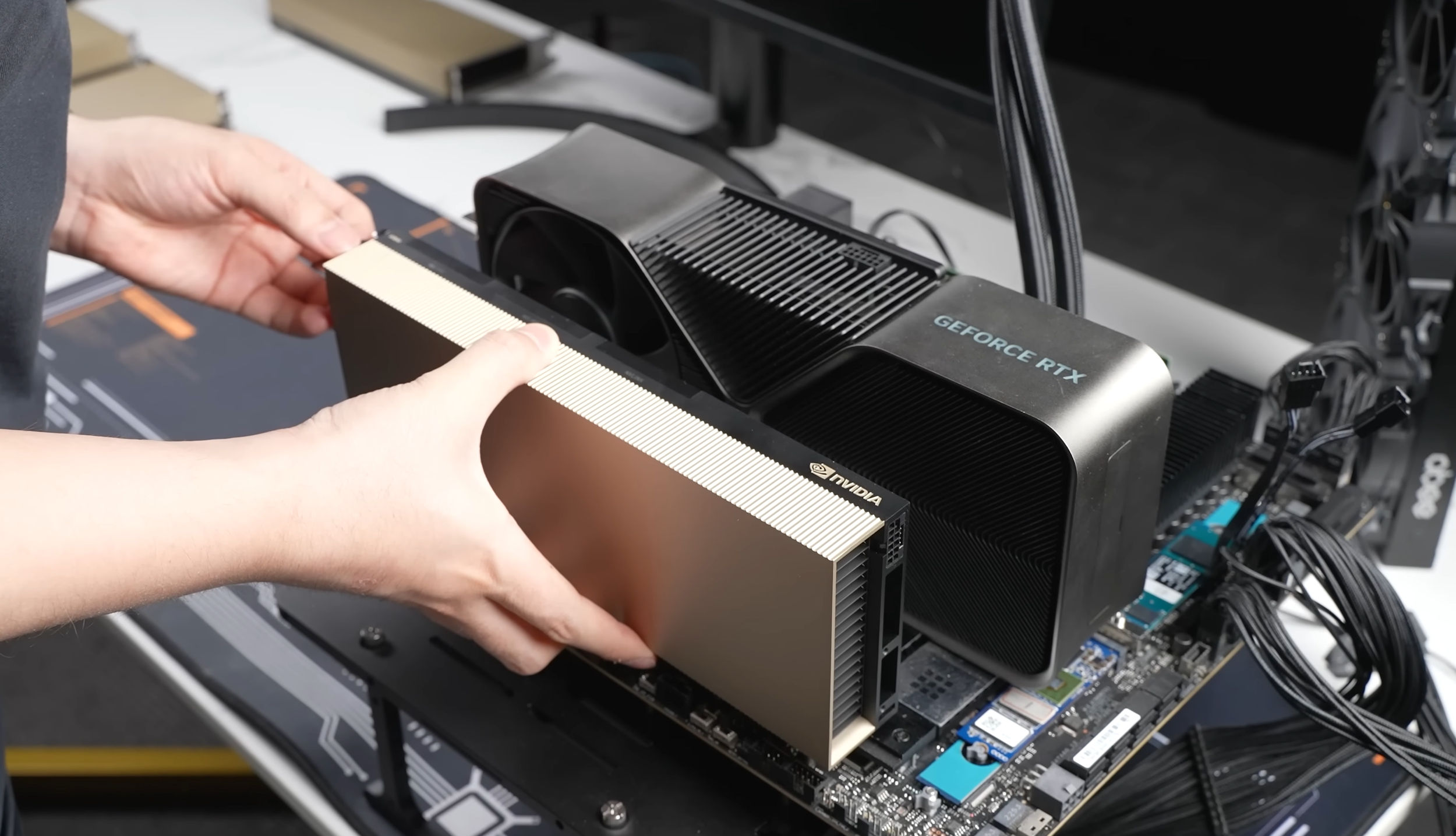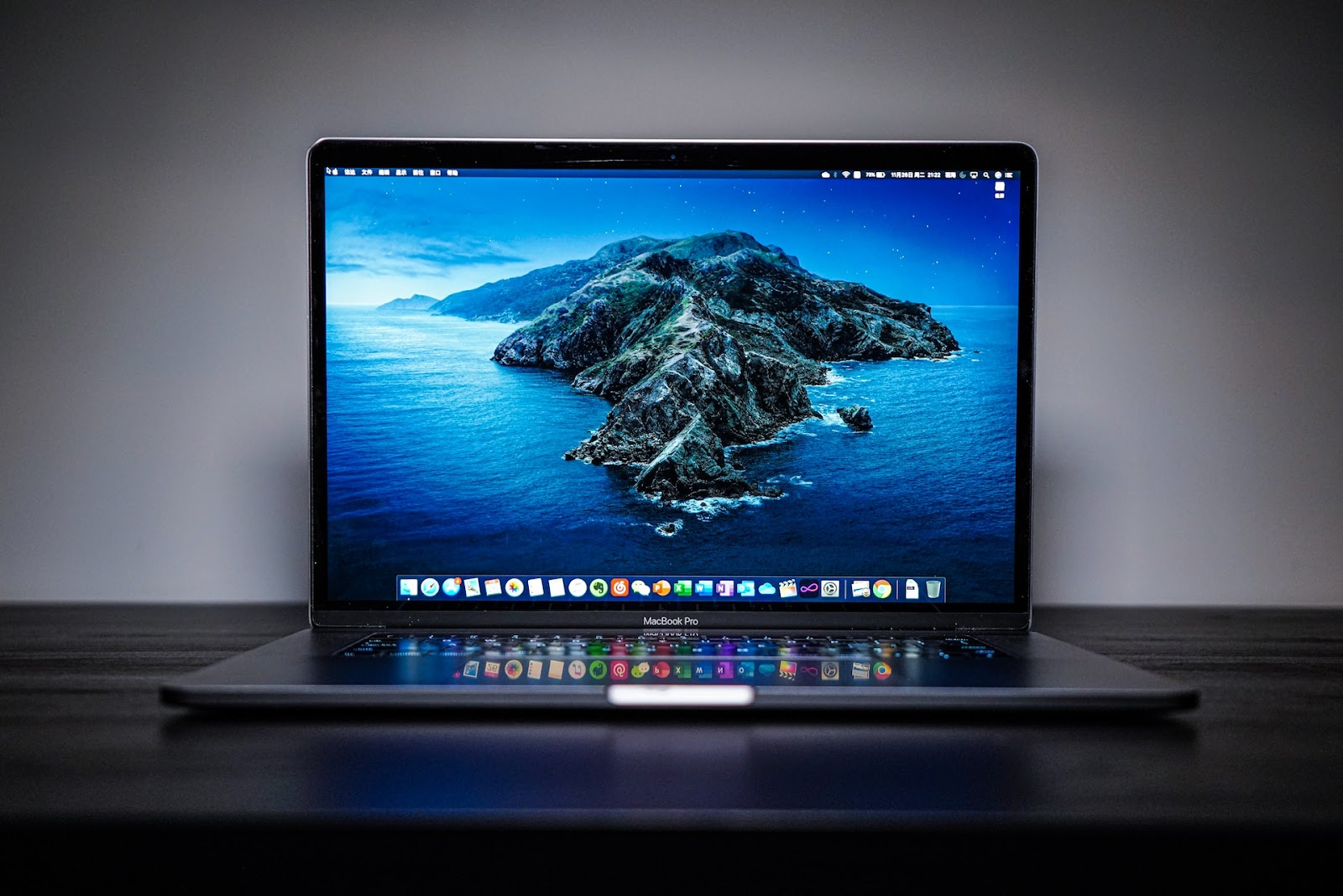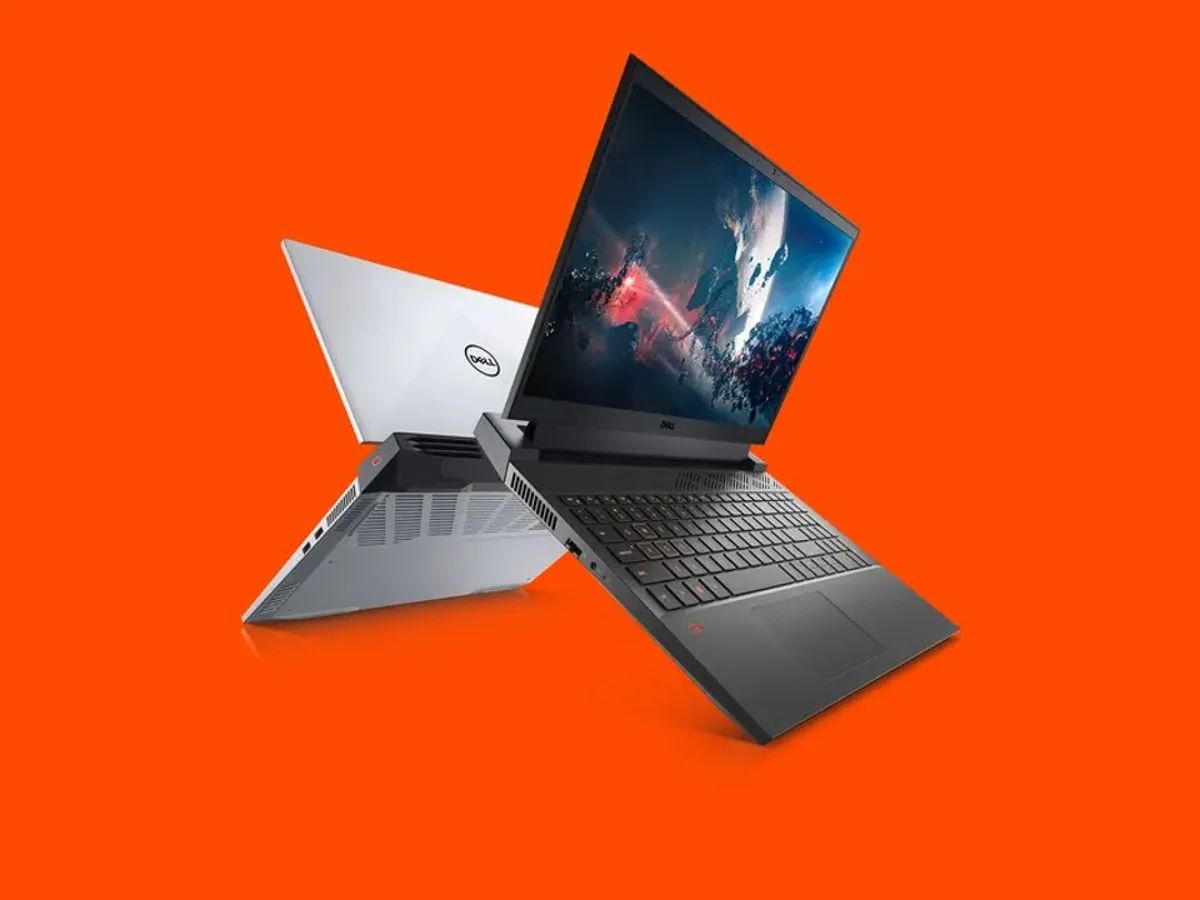Introduction
When it comes to gaming, fast and smooth performance is crucial in creating an immersive and enjoyable experience. While the central processing unit (CPU) plays a vital role in handling various tasks, the graphics processing unit (GPU) takes gaming to a whole new level by specializing in rendering high-quality graphics. In this article, we will explore the significance of utilizing the GPU instead of the CPU in game development and provide a step-by-step guide on how to make a game use GPU rendering.
Before delving into the details, it’s important to understand the difference between the GPU and the CPU. The GPU is specifically designed to process and render complex visual images, making it ideal for tasks such as gaming, video editing, and 3D modeling. On the other hand, the CPU is responsible for handling general-purpose tasks, such as running applications and managing system operations.
When it comes to gaming, the GPU surpasses the CPU in terms of graphical performance. The GPU’s parallel processing capabilities allow for faster data rendering and more complex graphical effects, resulting in stunning visuals and realistic gameplay. By offloading graphics-intensive tasks to the GPU, developers can significantly enhance the overall performance of their games.
Utilizing the GPU in game development offers several benefits. Firstly, it allows for better graphics quality, enabling developers to create visually stunning and immersive gaming environments. Secondly, it enhances performance by reducing the strain on the CPU, resulting in smoother gameplay and faster frame rates. Additionally, GPU rendering enables the implementation of advanced graphical effects, such as dynamic lighting, realistic shadows, and complex particle systems.
Now that we understand the significance of using the GPU in game development, let’s explore the steps to make a game use GPU rendering. By following these steps, you can unlock the full potential of your game’s graphical capabilities and deliver an unparalleled gaming experience to your players.
What is GPU?
A Graphics Processing Unit (GPU) is a specialized electronic circuit that is primarily designed to handle and accelerate the rendering of graphics and images. GPUs are commonly found in computers, gaming consoles, and mobile devices. While CPUs are responsible for general-purpose computing tasks, GPUs are specifically optimized for parallel processing and performing complex calculations required for graphics rendering.
The GPU consists of multiple cores, each capable of executing thousands of arithmetic operations simultaneously. This massive parallelism allows GPUs to process large amounts of data quickly, making them ideal for tasks that require high-performance graphical rendering, such as gaming and image/video processing.
One of the key features of GPUs is their ability to handle massive amounts of data in a highly parallel manner. This is achieved through the use of specialized memory structures and algorithms specifically designed for efficiently processing graphical data. GPUs can perform tasks such as geometry calculations, texture mapping, shading, and rasterization in parallel, resulting in the smooth and realistic rendering of three-dimensional graphics.
In addition to gaming, GPUs are also extensively used in other fields such as scientific research, artificial intelligence, and cryptocurrency mining. Their parallel processing capabilities make them ideal for performing complex calculations required in these domains.
Over the years, GPUs have evolved significantly, with advancements in technology pushing the boundaries of graphical performance. Modern GPUs offer features like real-time ray tracing, advanced shading techniques, and support for high-resolution displays, enabling developers to create visually stunning and lifelike graphics in their games.
In summary, a GPU is a specialized electronic circuit optimized for the efficient rendering of graphics and images. Its parallel processing capabilities and specialized algorithms make it an essential component for delivering high-quality graphics, immersive gaming experiences, and accelerating various computationally intensive tasks.
What is CPU?
The Central Processing Unit (CPU) is the primary component of a computer system responsible for executing and performing a wide range of tasks. It acts as the brain of the computer, handling general-purpose computations, managing system operations, and coordinating the execution of various software programs.
The CPU is composed of several cores, each capable of executing instructions and performing calculations. Each core consists of an arithmetic logic unit (ALU) responsible for carrying out mathematical and logical operations, as well as a control unit that manages the execution of instructions and coordinates data flow within the CPU.
CPUs are designed to handle a variety of tasks required by the operating system and application software. These tasks include executing instructions, managing memory, handling input and output operations, and coordinating the activities of other hardware components.
Unlike GPUs, which are optimized for parallel processing, CPUs are designed for sequential processing. This means that CPUs excel at handling tasks that require a step-by-step approach, such as running applications, performing calculations, and managing system resources.
Modern CPUs are equipped with various technologies and features to enhance performance and efficiency. These include multiple cores, which allow for improved multitasking and better overall performance by executing multiple instructions simultaneously. Additionally, CPUs often incorporate cache memory, which provides faster access to frequently used data and instructions, further enhancing performance.
The clock speed of a CPU, measured in gigahertz (GHz), refers to the number of cycles the CPU can execute in a second. Higher clock speeds generally result in faster processing times. However, modern CPUs also employ techniques such as turbo boost, which can dynamically increase the clock speed when additional processing power is required.
In summary, the CPU is the central processing unit of a computer system, responsible for executing instructions and performing a wide range of tasks. Its sequential processing capabilities and ability to handle general-purpose computations make it a crucial component of any computing device, ensuring the smooth and efficient operation of software applications and system processes.
GPU vs. CPU in Gaming
When it comes to gaming, both the GPU and CPU play essential roles, but they have distinct responsibilities. The GPU is primarily responsible for rendering graphics, while the CPU handles general-purpose tasks. Understanding the differences between the two is crucial in optimizing gaming performance.
Gaming heavily relies on graphics processing, making the GPU a critical component. Modern GPUs are designed with a high number of cores dedicated to parallel processing, allowing them to handle complex graphical calculations simultaneously. This parallelism enables the GPU to render realistic 3D graphics, handle complex shading, and produce stunning visual effects, resulting in immersive gaming experiences.
On the other hand, the CPU performs various tasks in gaming, including managing game logic, physics simulations, and handling AI computations. While the GPU is specialized in parallel processing, the CPU focuses on sequential processing, which is suitable for calculations that require a step-by-step approach.
In gaming scenarios, the GPU’s parallel processing capabilities excel at rendering graphics quickly. By efficiently distributing the workload across its numerous cores, the GPU can handle complex graphics rendering without putting excessive strain on the CPU. This allows for smoother gameplay, faster frame rates, and reduced input lag.
However, the CPU remains essential in gaming as it manages the overall game flow and handles non-graphical computations. It ensures that the game logic is executed correctly, physics simulations are calculated accurately, and AI opponents exhibit realistic behavior. The CPU’s performance is crucial in maintaining a smooth gaming experience, especially in games that heavily rely on CPU-intensive tasks.
The key to optimizing gaming performance lies in the balance between the GPU and CPU utilization. While the GPU takes the lead in handling graphics-intensive tasks, it is important to ensure that the CPU has enough processing power to handle non-graphical calculations and game management efficiently. A well-balanced system will maximize the performance of both components, resulting in a seamless gaming experience.
Modern gaming systems often utilize multi-core CPUs and powerful GPUs to achieve optimum performance. This combination allows for efficient utilization of resources, ensuring that both graphics and non-graphics tasks are executed smoothly. Developers also optimize their games by offloading graphics-intensive tasks to the GPU, freeing up the CPU to handle other important computations.
In summary, a successful gaming experience relies on a harmonious partnership between the GPU and CPU. While the GPU excels at graphics rendering with its parallel processing capabilities, the CPU handles other crucial tasks in gaming. By utilizing the strengths of both components and maintaining a good balance, developers can achieve optimal gaming performance and deliver visually stunning, immersive games.
Benefits of Using GPU in Games
In the world of gaming, utilizing the power of the Graphics Processing Unit (GPU) offers several significant benefits that enhance the overall gaming experience. Let’s explore some of the key advantages of using the GPU in game development.
1. Improved Graphics Quality: The GPU’s primary function is to render graphics, making it highly specialized in handling graphical tasks. By offloading graphics rendering to the GPU, game developers can achieve higher-quality visuals, including detailed textures, realistic lighting effects, and smooth animations. This results in more immersive and visually stunning game environments that captivate players.
2. Enhanced Performance: With its parallel processing capabilities, the GPU excels at handling graphics-intensive tasks, allowing for faster rendering and smoother gameplay. Offloading these tasks from the CPU to the GPU reduces the strain on the CPU, allowing it to focus on other crucial computations and game management. This ultimately leads to better overall performance, faster frame rates, and reduced input lag.
3. Advanced Graphical Effects: GPUs are equipped with specialized features like shaders and compute capabilities, enabling developers to implement advanced graphical effects in their games. This includes effects like dynamic lighting, realistic shadows, physics simulations, and complex particle systems. By harnessing the power of the GPU, developers can create visually stunning and realistic effects that enhance the immersion and believability of the game world.
4. Optimized Resource Utilization: GPUs are designed to efficiently process large amounts of data in parallel, leading to optimized resource utilization. By utilizing the GPU, game developers can make use of the vast number of GPU cores to distribute the workload and decrease processing time. This ensures that computational resources are utilized effectively, resulting in faster rendering times and improved overall efficiency.
5. Future-proofing: GPUs continue to advance rapidly, with manufacturers constantly introducing new technologies and features. By utilizing the GPU in game development, developers can future-proof their games by taking advantage of the latest graphical advancements. This allows them to deliver cutting-edge visuals that take full advantage of the latest hardware capabilities.
In summary, incorporating the GPU into game development offers numerous benefits. Improved graphics quality, enhanced performance, advanced graphical effects, optimized resource utilization, and future-proofing are just a few advantages that make the GPU an invaluable component in delivering immersive and visually stunning gaming experiences.
Steps to Make a Game Use GPU Instead of CPU
Optimizing a game to utilize the power of the Graphics Processing Unit (GPU) instead of relying solely on the Central Processing Unit (CPU) can greatly enhance its graphical performance. Let’s explore the steps involved in making a game utilize the GPU effectively.
Step 1: Selecting the Right GPU for Your Game
Choose a GPU that suits the requirements of your game. Consider factors such as the GPU’s capabilities, memory capacity, and compatibility with your game engine. Research different GPUs and compare their performance benchmarks to ensure it meets your desired graphical goals.
Step 2: Optimizing Game Assets for GPU Rendering
Optimize your game assets, including textures, models, and animations, to take full advantage of the GPU’s capabilities. Reduce file sizes and optimize image formats to ensure faster loading times and efficient memory utilization during rendering.
Step 3: Implementing GPU Rendering in Your Game Engine
Configure your game engine to utilize the GPU for rendering graphics. Set up the necessary shaders and pipelines to offload graphical calculations to the GPU. Explore the documentation and resources provided by your game engine to understand how to best utilize GPU rendering techniques.
Step 4: Utilizing Shaders and GPU Compute
Implement shaders to harness the power of the GPU for custom graphical effects. Utilize techniques such as vertex shaders, fragment shaders, and compute shaders to optimize the rendering pipeline and offload calculations to the GPU. Explore GPU compute capabilities to further leverage the parallel processing power of the GPU for complex calculations.
Step 5: Testing and Debugging GPU Performance
Thoroughly test your game’s GPU performance to ensure optimal rendering. Monitor frame rates, loading times, and resource utilization to identify any performance bottlenecks. Use profiling tools and performance analyzers to debug and optimize GPU-specific issues, making necessary adjustments to enhance overall performance.
By following these steps, you can maximize the GPU’s potential in your game, resulting in improved graphical quality, enhanced performance, and a highly immersive gaming experience. Remember to stay up-to-date with advancements in GPU technology and regularly optimize your game to take advantage of the latest improvements for even better results.
Step 1: Selecting the Right GPU for Your Game
Choosing the right Graphics Processing Unit (GPU) is a crucial step in optimizing your game to utilize the power of GPU rendering. Selecting a GPU that aligns with your game’s requirements and performance goals can significantly impact the overall graphical performance and visual quality of your game. Here are some considerations to keep in mind when selecting a GPU:
Evaluate Performance:
Understand the performance capabilities of different GPUs by reviewing benchmarks and performance tests. Look for GPUs that can handle the graphical demands of your game, such as rendering complex 3D models, high-resolution textures, and advanced visual effects. Consider the GPU’s core count, clock speed, memory bandwidth, and memory capacity to ensure it meets the requirements of your game.
Compatibility with Game Engine:
Ensure that the GPU you choose is compatible with your game engine. Review the system requirements and recommended GPUs provided by the game engine’s documentation. Some engines may have specific optimizations or features that work best with certain GPUs. Matching your GPU with your game engine ensures compatibility and maximizes the benefits of GPU rendering.
Memory Capacity:
Consider the GPU’s memory capacity, as it directly impacts the number and quality of assets that can be loaded simultaneously. Higher memory capacity allows for the storage of larger textures, more complex models, and additional graphical data, resulting in improved visual quality and smoother performance. Evaluate your game’s asset requirements and choose a GPU with sufficient memory capacity to avoid performance issues.
Power Efficiency:
Power consumption is an important factor, especially for laptops and energy-conscious setups. Look for GPUs that offer a good balance between performance and power efficiency. Energy-efficient GPUs not only reduce electricity costs but also generate less heat, leading to quieter operation and longer hardware lifespan.
Budget Considerations:
Set a budget for your GPU and prioritize performance based on your financial constraints. Research and compare prices of different GPU models to find the best value for your investment. Consider the game’s target audience and their hardware capabilities to determine an appropriate budget for GPU selection.
By selecting the right GPU for your game, you can ensure that your game’s graphical requirements are met, resulting in enhanced visuals and improved performance. Take the time to research different GPUs, evaluate their performance, ensure compatibility with your game engine, consider memory capacity, power efficiency, and budget constraints. Making an informed decision when selecting a GPU sets the foundation for successful GPU utilization in your game.
Step 2: Optimizing Game Assets for GPU Rendering
Optimizing game assets is a crucial step in harnessing the power of Graphics Processing Units (GPUs) for rendering. By efficiently optimizing your game assets, you can ensure faster loading times, reduced memory usage, and smoother performance. Follow these steps to optimize your game assets for GPU rendering:
Reduce Texture Sizes:
Textures can consume a significant amount of GPU memory, impacting performance. Resize and compress textures to appropriate sizes without compromising visual quality. Consider using texture formats that provide efficient compression, such as JPEG or WebP, to reduce file sizes. Implement texture streaming techniques to load only the necessary textures dynamically, minimizing GPU memory usage.
Optimize 3D Models:
Streamline your 3D models to reduce polygon counts, eliminate unnecessary details, and simplify geometry. This optimization technique, known as LOD (Level of Detail), allows the GPU to render models at different levels based on distance, conserving processing power. Implementing LOD systems can greatly improve rendering performance, especially in scenes with many complex models.
Use Efficient Mesh Compression:
Consider using mesh compression techniques like mesh simplification or mesh decimation to reduce the complexity of the models while maintaining visual fidelity. This optimization reduces memory usage and improves rendering performance by allowing the GPU to process simpler meshes more efficiently.
Implement Texture Atlasing:
Combine multiple small textures into a single larger texture atlas. By reducing the number of texture bindings and draw calls, this technique reduces CPU overhead and enhances GPU performance. Texture atlasing also reduces memory consumption, improving overall efficiency and rendering performance.
Cull Invisible Objects:
Implement occlusion culling techniques to ensure that objects that are not visible are not rendered. By preventing the GPU from rendering objects outside the camera’s view frustum or hidden behind other objects, you can significantly reduce the number of unnecessary draw calls, improving performance and optimizing GPU usage.
Utilize GPU-friendly Shader Techniques:
Optimize your shaders to ensure efficient processing on the GPU. Utilize techniques such as deferred shading, which reduces the number of computations per-pixel by separating lighting calculations into multiple stages. Implement instanced rendering to efficiently render multiple instances of the same object in a single draw call, reducing CPU overhead and improving performance.
By following these steps, you can optimize your game assets for GPU rendering, leading to improved performance and visual quality. Remember to test and iterate on your optimizations to find the right balance between performance and visual fidelity. Efficient asset optimization enables the GPU to process and render game assets quickly and accurately, resulting in a smooth and visually appealing gaming experience.
Step 3: Implementing GPU Rendering in Your Game Engine
Once you have selected the right Graphics Processing Unit (GPU), the next step is to implement GPU rendering in your game engine. This involves configuring your game engine to utilize the GPU for rendering graphics efficiently. Follow these steps to implement GPU rendering in your game engine:
Understand your Game Engine:
Familiarize yourself with the rendering pipeline and graphics capabilities of your game engine. Understand how the engine handles rendering and the tools or APIs available for GPU utilization. This knowledge will help you make the necessary adjustments for effective GPU rendering.
Offload Rendering to the GPU:
To maximize GPU utilization, offload as much rendering work as possible from the CPU to the GPU. Identify CPU-bound tasks and determine whether they can be performed efficiently on the GPU. Offloading tasks such as static and dynamic lighting calculations, post-processing effects, and particle systems to the GPU can significantly improve performance.
Use GPU-friendly APIs:
When implementing GPU rendering, utilize graphics APIs that maximize GPU efficiency, like DirectX or OpenGL. Use the GPU-specific features and functionalities provided by these APIs to optimize your rendering techniques. Ensure that you are using the latest version of the API and take advantage of any GPU-specific optimizations they offer.
Optimize Render Queues:
Create efficient render queues to group objects with similar rendering properties together. This allows for faster rendering by reducing the number of state changes and draw calls. Minimizing the overhead of GPU state changes leads to improved performance and faster rendering times.
Implement GPU Task Scheduling:
Implement a task scheduling system that optimizes GPU resource usage. This involves optimizing the order and timing of rendering calls to utilize the GPU efficiently. Group rendering tasks that can be executed in parallel to take full advantage of the GPU’s parallel processing capabilities.
Utilize Multi-threading:
Make use of multi-threading to distribute the workload across CPU cores, allowing for efficient use of both the CPU and GPU. Implement techniques like asynchronous loading and background processing to free up the CPU for other tasks while the GPU is rendering. This improves overall performance, reduces frame rate drops, and optimizes GPU utilization.
By implementing GPU rendering in your game engine, you can harness the full potential of the GPU’s parallel processing capabilities. Offloading rendering tasks to the GPU and optimizing GPU usage not only improves game performance but also enables you to deliver visually stunning and immersive experiences to your players.
Step 4: Utilizing Shaders and GPU Compute
Utilizing shaders and GPU compute capabilities is a critical step in maximizing the potential of the Graphics Processing Unit (GPU) in your game. By harnessing the power of shaders and GPU compute, you can optimize rendering performance, implement advanced graphical effects, and offload complex calculations to the GPU. Here are the steps to effectively utilize shaders and GPU compute in your game:
Understand Shaders:
Shaders are programs that run on the GPU to control various aspects of the rendering pipeline, such as vertex transformations, fragment shading, and post-processing effects. Familiarize yourself with the shader languages supported by your game engine (e.g., HLSL, GLSL) and understand how to write and implement shaders effectively.
Optimize Shader Code:
Write efficient shader code that minimizes unnecessary calculations and memory access. Optimize your shaders to reduce register usage, eliminate unnecessary branches, and utilize hardware-specific optimizations. This ensures that your shaders run efficiently on the GPU, improving overall rendering performance.
Implement Custom Shaders:
Implement custom shaders to achieve advanced graphical effects in your game. Utilize techniques such as per-pixel lighting, normal mapping, parallax mapping, and deferred shading to enhance the visual quality of your game. Customize your shaders to suit the specific needs of your game and take advantage of the GPU’s parallel processing capabilities.
Use GPU Compute:
GPU compute allows you to perform complex calculations on the GPU using techniques like general-purpose computing on the GPU (GPGPU). Offload computationally intensive tasks, such as physics simulations, collision detection, or AI computations, to the GPU. This frees up the CPU for other game-related tasks, improving overall performance.
Implement Parallel Algorithms:
When utilizing GPU compute, design your algorithms to take full advantage of the GPU’s parallel processing capabilities. Implement parallel algorithms that can divide the task into smaller workloads and execute them simultaneously on multiple GPU cores. This allows for efficient utilization of the GPU’s resources and speeds up computation times.
Use Compute Shaders:
Compute shaders are a specific type of shader that enables you to perform general-purpose computations on the GPU. Utilize compute shaders to execute complex calculations that may not directly relate to rendering. This can include physics simulations, cloth simulations, particle systems, or procedural generation, among others. Compute shaders leverage the GPU’s parallel processing power to accelerate these computations and achieve better performance.
By effectively utilizing shaders and GPU compute, you can optimize rendering performance and implement advanced graphical effects in your game. Offloading complex calculations to the GPU frees up the CPU and improves overall performance. Implement custom shaders and parallel algorithms, utilize compute shaders, and optimize shader code to harness the full potential of the GPU and deliver visually stunning and highly optimized gaming experiences.
Step 5: Testing and Debugging GPU Performance
Testing and debugging the GPU performance of your game is a crucial step in ensuring smooth and optimized rendering. By thoroughly evaluating and analyzing the GPU performance, you can identify bottlenecks, optimize resource usage, and deliver an optimal gaming experience. Here are the steps involved in testing and debugging GPU performance:
Monitor GPU Metrics:
Utilize GPU monitoring tools to measure various metrics such as GPU usage, memory usage, frame rates, and temperature. These tools provide valuable insights into how your game is utilizing the GPU and whether there are any performance issues or resource limitations.
Profile Your Game:
Use profiling tools provided by your game engine or external software to identify performance bottlenecks within your game. Profile both the CPU and GPU to ensure efficient utilization of resources and identify any areas that may be impacting GPU performance.
Identify GPU-bound Areas:
During testing, identify areas in your game that are GPU-bound, meaning they are heavily reliant on GPU resources. These areas may include scenes with complex geometry, high-resolution textures, or intense graphical effects. Analyze these areas to determine if any optimizations can be made to reduce the strain on the GPU.
Optimize GPU Resources:
Optimize GPU resource usage by reducing unnecessary draw calls, minimizing texture swapping, and optimizing shader performance. Investigate ways to batch rendering calls, utilize texture atlases, and implement efficient memory management techniques to reduce GPU overhead and improve overall performance.
Debug GPU-specific Issues:
If you encounter GPU-specific issues such as graphical artifacts, flickering, or incorrect rendering, investigate the shader code and rendering settings. Debug shader compilation errors, ensure correct shader inputs, and validate that shader outputs are accurate. Analyze and tweak rendering settings such as anti-aliasing, shadow map resolutions, and post-processing effects to resolve any GPU-related issues.
Test on Various Hardware Configurations:
Ensure you test your game on different hardware configurations to simulate a wide range of player setups. This allows you to identify potential compatibility issues or performance disparities across different GPU models. Consider testing on both high-end and low- to mid-range GPUs to ensure your game runs optimally on a variety of systems.
Iterate and Optimize:
Iterate on your optimizations based on the findings from your testing and debugging. Analyze performance metrics, make necessary adjustments, and re-test to ensure continued improvement. Optimize until you achieve the desired GPU performance while maintaining the visual quality and overall gaming experience.
By diligently testing and debugging the GPU performance of your game, you can identify and address any performance bottlenecks, improve overall rendering efficiency, and deliver a smooth and visually appealing gaming experience to your players.
Conclusion
Optimizing your game to utilize the power of the Graphics Processing Unit (GPU) can have a significant impact on its graphical performance, rendering quality, and overall gaming experience. By following the steps outlined in this article, you can effectively leverage the capabilities of the GPU and create visually stunning and immersive games. Let’s recap the steps:
In Step 1, selecting the right GPU for your game ensures compatibility, performance, and efficient resource utilization. Researching and evaluating different GPUs based on your game’s requirements sets a strong foundation for GPU utilization.
In Step 2, optimizing game assets for GPU rendering helps reduce memory usage, improve loading times, and enhance overall performance. By resizing textures, optimizing 3D models, and implementing texture atlasing, you can ensure efficient GPU usage.
In Step 3, implementing GPU rendering in your game engine enables efficient utilization of the GPU’s power. Optimizing render queues, utilizing multi-threading, and offloading rendering tasks to the GPU contribute to improved performance and resource utilization.
In Step 4, utilizing shaders and GPU compute allows for advanced graphical effects and offloading complex calculations to the GPU. Writing efficient shader code, implementing custom shaders, and utilizing compute shaders optimize GPU rendering and performance.
In Step 5, testing and debugging GPU performance is essential to identify bottlenecks, optimize GPU resource usage, and deliver an optimized gaming experience. Monitoring GPU metrics, profiling your game, and debugging GPU-specific issues ensure smooth and efficient GPU rendering.
By following these steps, you can unlock the full potential of the GPU in game development, resulting in visually stunning graphics, improved performance, and an immersive gaming experience. Keep in mind that optimizing for the GPU is an ongoing process that requires testing, iteration, and keeping up with advancements in GPU technology.
So, embrace the power of the GPU, optimize your game assets, utilize shaders and GPU compute, and test and optimize GPU performance. By doing so, you can create games that captivate players with their incredible visuals, fast performance, and immersive gameplay.







